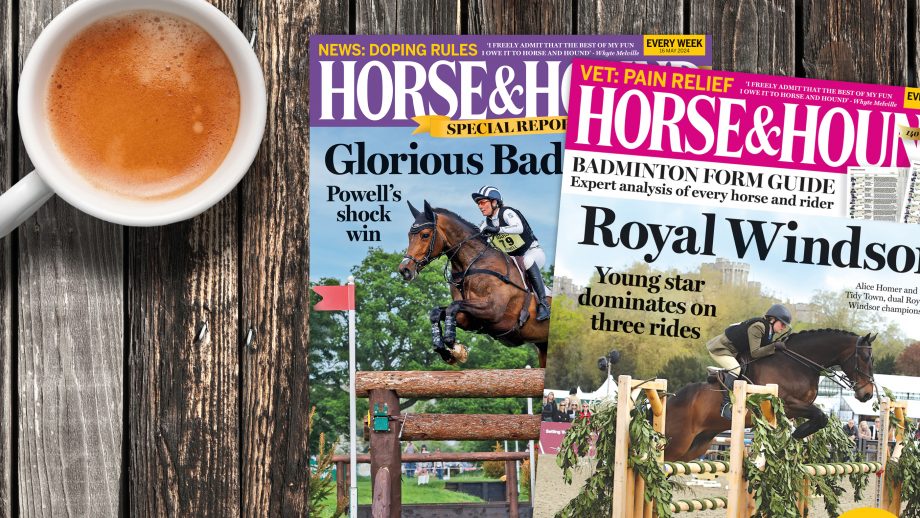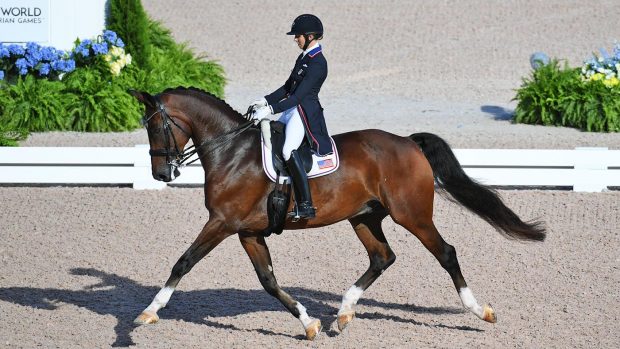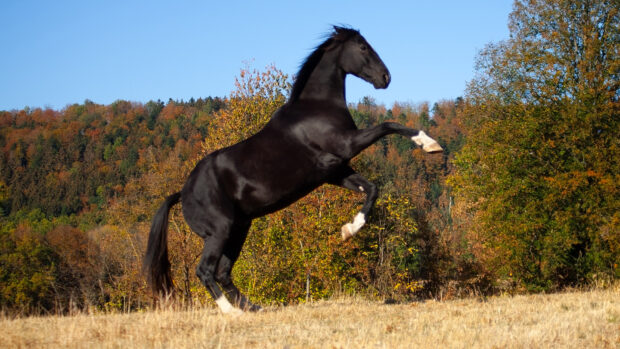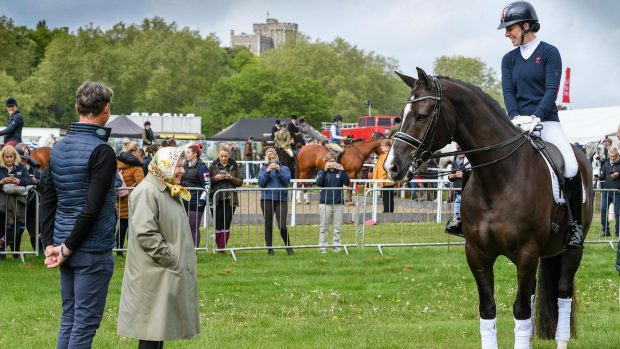Issues with double bridles, jumping in draw reins and a shift away from classical techniques are among concerns raised at the World Cup Finals – as stewards aim to protect horse welfare and “save our sport”.
Independent welfare group R-Haltenswert was invited to the event in Basel (2–6 April), to monitor the warm-up arenas, observe the stewards and report on their findings.
The show’s organisers said beforehand this was part of a zero-tolerance approach to misconduct, specifically targeting actions that compromise horse welfare.
“We want to offer our main players, the horses, the best conditions so they feel comfortable with us,” said Thomas Straumann, president of directors for organisers Longines CHI Classics Basel. “We ask all officials, including our staff, to look closely, not look away.”
R-Haltenswert’s lead representative, André Hascher, told H&H there were positives and concerns.
“What’s positive is that we have an organising committee who did what they said and were totally behind us,” he said. “The organisers opened all the doors, there was nothing hidden. I hope many other competition organisers follow their example.
“The negative is that sections of the audience showed there are some riders they didn’t want to look at. You could hear it [some combinations were whistled] in the arena.
“While our first priority is always horse welfare, we also want to save our sport, to have further World Cup Finals and Olympics, and if we ride and act in a way that a normal audience can’t follow us, and don’t agree with how we treat the horses, we won’t have a future.”
Although R-Haltenswert’s equine quality control (EQC) stewards – Falk Stankus, Jonathan Marquardt and Marcel Egger – had no authority to eliminate riders or intervene directly, they were, by day three, included in direct communications with the chief stewards and lead vet, enabling them to escalate “urgent” concerns.
“Whenever we had a concern, the stewards came directly and listened to us, which was perfect,” Mr Hascher said. “However, what they did afterward wasn’t consistent.
“Sometimes it was a good response, sometimes it was too little. For example, we had an urgent concern about a showjumping horse with a noseband that was much too tight, in our opinion. When one of the stewards came, he was looking but didn’t really do anything and just said it was in accordance with the rules.
“We disagreed and said there should be a two-finger check [the FEI’s noseband measuring device roll-out has been delayed until May] but for some reason, he refused to do it.”
Warm-up footage
R-Haltenswert also set up an exhibition stand, streaming live footage from the warm-up and lungeing arenas for the public to observe.
In the dressage warm-up, stewards appeared proactive, frequently asking grooms to wipe foam from horses’ mouths before they entered the ring. But Mr Hascher highlighted concerns with tack and technique.
“In the dressage warm-up, I noticed that many nosebands were not correct, and there are ongoing problems with the double bridle and curb chain,” he said.
“We strongly requested that one horse be checked again for its curb bit, and this was done immediately. However, the way it was checked was flawed – and in our opinion, there’s a partial lack of expertise among the stewards.
“What was also a pity is that many riders started well in the first 20 minutes; they often had a good seat, good rhythm, and control. But then they seemed to enter ‘competition mode’, and everything became tense.
“They pushed the horses more, raised them too high, and lost the swing in the back – and I think that was visible in the arena.”
Classical principles
Mr Hascher also noted a shift away from classical riding principles.
“We don’t see so much classical riding any more,” he said. “It’s become more mechanical, more show dressage.”
Mr Hascher raised concerns over riders jumping in draw reins.
“I’ve never seen anything like it before, and I was really taken aback,” he said. “They were using very sharp bits alongside draw reins to jump 1.60m in the warm-up – it felt quite extreme.
“Nothing happened, but it’s really not good. A lot of the riders weren’t paying attention to their horses; some were sitting with one hand on the draw reins, the other on their mobile phones, not watching their colleagues or focusing on the horse.”
Although he was pleased with the access he was allowed, Mr Hascher expressed frustration with what he found.
“I knew things wouldn’t change just because our EQCs were present,” he said. “But we had hoped to see only occasional, accidental mistakes. Instead, many of the problems we observed felt systemic.”
An FEI spokesperson told H&H the FEI “established clear reporting lines” to ensure any feedback from R-Haltenswert was communicated to FEI stewards, and reviewed by the relevant FEI director on-site, then officials, who have “rigorous training and extensive experience”.
“The FEI recognises that external expertise can contribute to discussions on horse welfare and that constructive feedback is essential for the continual evolution of our sport,” he said. “However, we maintain that all official decisions, concerning horse welfare, field-of-play matters or disciplinary actions, remain under the exclusive jurisdiction of FEI officials.
“We are proud of the high standards FEI stewards upheld in Basel. Their expertise is continuously developed, ensuring they remain at the forefront of best practices in horse welfare.
“We respectfully disagree with any suggestion that questions the capability of the FEI stewards in Basel. The FEI directors were pleased to offer additional clarification to representatives of R-Haltenswert on certain aspects of FEI rules and procedures to provide a more complete context for their observations.”
- To stay up to date with all the breaking news from major shows throughout 2025, subscribe to the Horse & Hound website
You may also be interested in:

‘Look closely, not away’: FEI World Cup Final organisers announce zero-tolerance policy on welfare violations

Legacy! Unstoppable Lottie Fry and Glamourdale storm to World Cup Final victory in Basel

Gamble to glory! Frenchman wins World Cup Jumping Final, Brit takes second

Meet Donatello d’Auge – the home-bred, barefoot star behind Julien Epaillard’s World Cup triumph

Subscribe to Horse & Hound magazine today – and enjoy unlimited website access all year round






